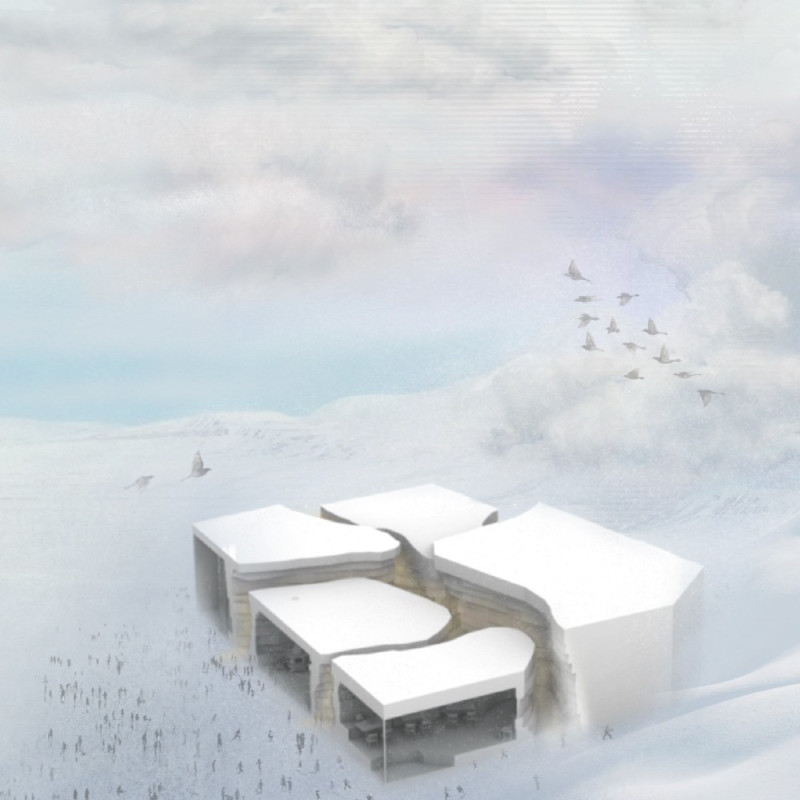5 key facts about this project
At its core, the architecture is characterized by a careful consideration of materials, form, and space. The choice of materials is particularly significant. Utilizing locally sourced materials such as sustainably harvested timber, concrete, and glass not only underscores a commitment to environmental responsibility but also weaves the structure seamlessly into its setting. The use of timber reflects a warm, organic quality, while concrete provides structural integrity, allowing for expansive, open spaces that encourage collaboration and innovation. Large glass facades invite natural light to permeate the interior, creating an uplifting atmosphere that enhances productivity and well-being.
The design layout strategically divides the project into distinct yet interconnected zones. Public areas are generously proportioned, designed for gatherings, workshops, and events, encouraging engagement among visitors and fostering a sense of community. In contrast, private areas are thoughtfully arranged to ensure tranquility and focus, catering to individual pursuits or small group activities. This balance between public and private realms speaks to the project's adaptability, allowing it to function effectively in various ways depending on the requirements of its users.
One of the most notable design approaches is the incorporation of green spaces within the architectural plan. The project integrates landscaped terraces and gardens that not only enhance the visual appeal but also serve as vital recreational spaces. These areas promote outdoor activities, offering a refreshing contrast to the indoor environments. The design thoughtfully positions these green spaces to optimize views and accessibility, making them integral components of the overall layout.
The roof design stands out as a significant feature of the project. Its form not only adds character but is also configured to support solar panels, reflecting a commitment to sustainability and energy efficiency. This proactive approach to energy generation demonstrates an understanding of contemporary architectural responsibilities, highlighting the importance of integrating renewable technologies into modern designs.
Furthermore, the architectural sections reveal an intelligent layering of spaces that cater to both functionality and fluidity. By employing open floor plans supplemented by flexible partitions, the design allows for easy reconfiguration of the space according to the changing needs of its occupants. This adaptability is crucial in contemporary architecture, where user requirements can evolve over time.
Another important detail is the consideration of acoustics within the design. Attention to sound insulation and the selection of materials enhances the auditory experience in both public and private spaces, ensuring that the environment remains conducive to its intended functions. This level of planning reflects a deep understanding of user experience and the various factors that contribute to a successful architectural outcome.
Lighting plays a pivotal role in the overall ambiance of the project. Natural light is maximized through strategic window placement and skylights, reducing the reliance on artificial lighting and creating a seamless transition between the interior and exterior. This thoughtful integration of natural light enhances not just the aesthetic value but also contributes positively to the health and well-being of the occupants.
In summary, this architectural project exemplifies a deliberate and cohesive vision that marries function, sustainability, and aesthetic quality. Its unique design approaches, such as the integration of green spaces, the use of local materials, and an adaptable layout, reflect contemporary architectural trends while addressing the needs of the community. Each element, from the materials selected to the spatial organization, has been meticulously thought out, resulting in a design that is both practical and inspirational. To delve deeper into the nuances of this architectural endeavor, consider exploring the architectural plans, architectural sections, and various architectural designs that showcase the innovative ideas that define the project.


























